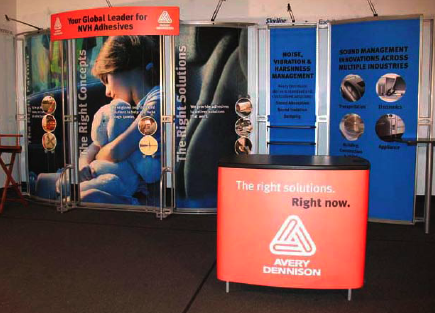 Exhibiting at key industry trade shows can be a very effective marketing strategy. However, trade shows require more than just a booth and booth space. Following are 12 considerations when planning and budgeting for trade shows.
Exhibiting at key industry trade shows can be a very effective marketing strategy. However, trade shows require more than just a booth and booth space. Following are 12 considerations when planning and budgeting for trade shows.
1. Trade show strategy: It is key to develop a strategic plan that identifies pre-, at- and post-show marketing, measurable goals, positioning, messaging and budgets. Do you have staff internally who can mange this or do you need external support?
2. Management: Someone (either internally or externally) will need to manage and coordinate every aspect of the trade show strategy from making the exhibit space deposit to determining post-show booth storage.
3. Exhibit space: Exhibit space costs differ by show and of course by the amount of booth space you want. Also, check to see what else the booth space includes. For example, does it include carpeting and drayage?
4. Booth: Will you rent, purchase or build your own booth? Who will design the actual booth messaging and graphics? Also, plan for the details including booth and equipment shipping, drayage, graphics, signage, furniture (tables, chairs, counters, screens), literature racks, free-standing kiosks, lighting, audio-visual, computers and other technology on site, designated lead retrieval, floral arrangements, etc.
5. Manage set up: Determine the labor required to set up your booth. Will you need utilities, electric/compressed air/gas, carpet, cleaning services, water/plumbing, rigging, special effects or security?
6. Booth staffing: Which personnel will run your booth? Decide now and plan airfare, hotel, local transportation and budgets for food and other expenses early to secure the best rates.
7. Pre-show promotion: What per-show promotions will you do to increase foot traffic to your booth? If you conduct direct marketing, you’ll need to account for invitations, customer/prospect database and postage. Do you plan to conduct pre-show publicity, or advertising?
8. Show/booth promotion: How will you generate excitement and activity at your booth? Booth giveaways, demonstrations, a hospitality suite/booth, literature, show sponsorships, interactive video?
9. Special events and speaking engagements: Most trade shows put out a call for speakers or presentation months in advance. Review the opportunities available; if you have an interesting expert or a great case study to share, consider applying to speak. Also, trade shows typically offer sponsorships that might range from being a show sponsor to sponsoring recycling bins or water coolers. Or, do you plan to conduct booth demonstrations, press conferences or presentations at your booth?
10. Deconstruction and storage: Account for booth deconstruction, drayage, shipping and booth storage.
11. Post-show promotion. How do you plan to conduct follow up with existing customers, prospects and media who expressed interest during the show? Will you use telemarketing, email marketing or direct mail to encourage sales?
12. ROI analysis. Document your results and compare against your strategic plan. Did you meet your goals? What results did the show yield? Was the cost worth the investment?
Need help planning for your next trade show? Contact kayleigh (at) sweeneypr (dot) com or 440.333.001 ext. 105 to get started.

